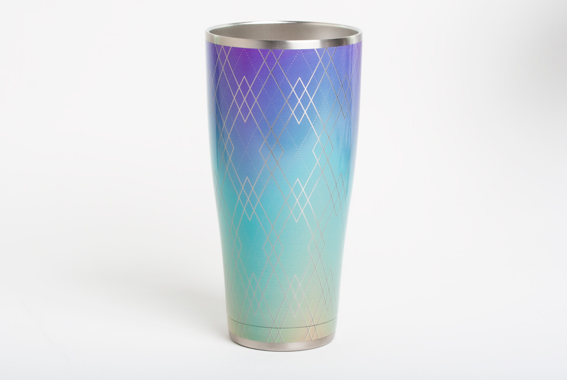- Equipment
- Inks & Supplies
- Services
- Applications
- Tagless
- Resources
- About Us
- Contact Us

Print on stainless steel substrates such as tumblers, wine glasses, beer koozies, utensil holders, and growlers without the worry of adhesion with MagiCoat™. The trend of personalization is growing for drinkware as well as many other applications. Additionally, a global call for non-plastic materials such as stainless and glass is becoming more apparent. Customize your products and pretreat them with MagiCoat™ to provide your customers with the best quality images possible.
Our MagiCoat™ Pre-Treatment System is a fast, effective, and environmentally friendly system for pre-treating stainless steel, glass and other materials. This system can accommodate both tapered and straight drinkware items. Unlike competitive pre-treatment options, this system boasts a 3-part mixing system that is water-based which is better for both the operator and the environment. An optional automatic flow detection system controls and monitors MagiCoat™ laydown to ensure a uniform application, and less work for the operator.
The infographic below highlights the main features of the MagiCoat™ system including a fine mist spraying system, 8 rotating stations, 3 flaming stations, and a gravity-feed syringe fill system.
Much like UV printing on glass, pre-treating stainless with MagiCoat™ requires a flame system and the 3-part solution. Once the stainless item is flame treated, a thin layer of MagiCoat™ is sprayed onto the substrate. The addition of MagiCoat™ acts as another anchor for the ink to stick to. We recommend waiting until the item is cooled to room temperature before printing on it.
Because we are focused on high quality results and our customers satisfaction, we take the extra step to perform adhesion testing on your samples. We test multiple inks and put your parts though vigorous testing, according to industry standard ASTM guidelines, to ensure optimal adhesion and abrasion resistance. We have all the tools required to carry out these tests, as well as highly trained technicians in house. To learn more about our process and see adhesion tests in action, refer to the article Adhesion Testing on Glass.
Back to Blog Home
Add Your Comment